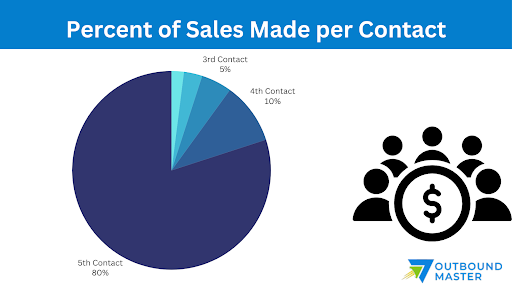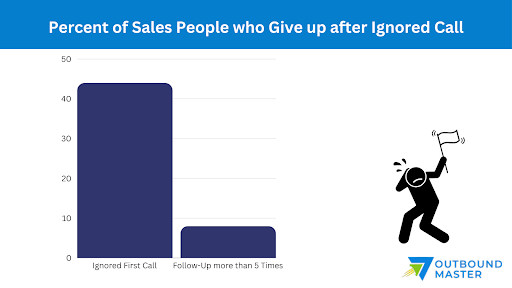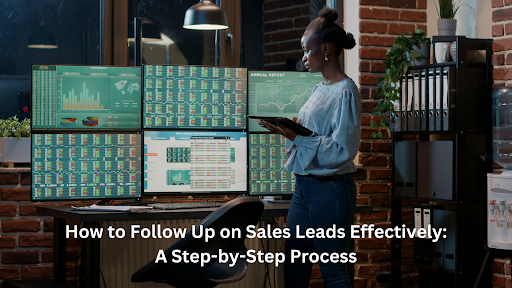How to Follow Up on Sales Leads Effectively: A Step-by-Step Process
Following up with sales leads is crucial for converting prospects into customers. However, optimizing your process requires in-depth strategies. This comprehensive guide covers the key steps for effective lead follow-up, from emphasizing timeliness to continuously improving. Read on to boost conversion rates.
I. Understanding the Importance of Timely Follow-Ups

Timing is everything when initially following up with leads. Studies show contacting them quickly results in significantly higher qualification rates compared to delayed outreach.
The first hour after a lead comes in is considered the golden hour for starting conversations. Data reveals sales reps who respond within 5 minutes are up to 8 times more likely to connect than those waiting 30 minutes.
This difference occurs because leads are hottest when they first raise their hand and express interest. Capitalizing on that initial enthusiasm prevents leads from going cold and boosts conversion rates. Companies see an average 15-20% increase in lead conversion when they respond within 5 minutes.
The optimal time window for reaching out is narrow. Waiting longer than a day drastically reduces your chances of qualifying for the lead. Set up processes to identify and respond to new leads within the first hour.
II. Segmenting Leads for Personalized Follow-Ups
With the importance of timeliness established, the next step is lead segmentation. Not all leads are identical – they need to be divided into categories based on attributes like:
- Interest level – Hot, warm, and cold leads require tailored strategies. Prioritize hot leads for urgent follow-up.
- Industry – Messaging can be customized by the prospect’s industry, company size, or niche. Leverage industry-specific use cases.
- Source – Inbound vs outbound leads may warrant different approaches depending on the context of the lead.
- Role – Decision makers, technical roles, and end users require content tailored to their needs.
- Geography – Localize messaging based on location, language, or regional differences.
According to experts, segmented and personalized follow-up messages deliver up to 2x higher open and click-through rates compared to one-size-fits-all outreach.
III. Crafting the Perfect Follow-Up Message
When engaging segmented leads, ensure you craft optimized messages by following these tips:
- Personalize the subject line using the prospect’s name and company. Highlight your value proposition.
- Open the email by warmly referencing your previous conversation or meeting. Use their first name to make it more personal.
- Communicate your unique value proposition upfront. Remind them specifically how your solution solves their needs.
- Include a Clear CTA or next step, like scheduling a demo or consultation. Make it easy for them to take action.
- Sign off with your name, contact details, and a customized message for a more human touch.
The ideal follow-up finds the balance between persistence and over-communication. On average, it takes 6-10 contacts to nurture a lead to conversion. Spread out your messages instead of blasting prospects.
IV. Choosing the Right Channels

In addition to messaging, selecting the right communication channels is key for effective follow-up:
- Email – Best for sending detailed value propositions, visuals, spec sheets, and video content. Personalize content based on the prospect’s role, industry, etc.
- Phone – Allows live interaction for addressing complex needs or urgent leads. Essential for high-value prospect scenarios.
- Text/SMS – Quick check-ins and reminders work well over text. Keep messages short and scannable.
- Social Media – Commenting on a prospect’s posts can help re-engage cold leads. Allows starting casual conversations.
- Direct Mail – Physical mail and gifts can grab more attention when promoting new offers or content.
Thoroughly evaluate each lead to determine the optimal channels based on their behaviors and preferences. For example, always call high-priority leads instead of just emailing.
V. Leveraging CRM Tools
Following up at scale while maintaining a personalized approach is difficult without marketing automation. That’s where CRM tools come into the picture:
- Lead scoring automatically ranks and prioritizes leads based on profile quality, engagement, and activity history. Ensure you focus on hot leads first.
- Triggered messages send relevant emails, calls, or texts automatically when leads meet specific criteria. For example, send pricing to leads who viewed a certain page.
- Drip campaigns allow you to schedule and customize an automated series of follow-up messages to be delivered over time. Prevents leads from slipping through cracks.
- Analytics lets you track channel performance through metrics like open rates, click-through rates, and unsubscribes. Optimize based on data.
The end goal remains to build genuine human relationships, even with automation. Set rules to ensure high-value, high-priority leads get more personalized attention compared to colder leads.
VI. Mastering Follow-Up Timing
When you follow up also impacts conversion results. Here are some proven best practices:
- First follow-up contact should happen within the first hour for hot leads, and within 24 hours for warm leads, to maximize response rates.
- For cold leads, wait a few days or a week before re-engaging them to avoid being perceived as overly salesy.
- Morning and late afternoon tend to have the highest open and response rates for sales emails.
- Avoid weekends or early mornings for proactive outreach unless dealing with ultra-urgent leads.
- Customize follow-up frequency based on lead source, with more persistent messaging for outbound generated leads.
Closely monitor lead engagement signals. If they open or click your message quickly, follow up again within 24 hours to capitalize on positive momentum.
VII. Handling Objections and Feedback
Despite your best efforts, many leads will still have product, pricing, or process objections that prevent them from converting. Here are some proven tips for overcoming objections:
- Listen fully to understand the root of their concerns before responding. Don’t interrupt them.
- Empathize genuinely with their position. Acknowledge and appreciate objections instead of getting defensive.
- Clarify any ambiguity by asking probing questions until you fully grasp their apprehension.
- Propose solutions that directly address the specific objections raised. Outline how you can solve their issues.
No matter the outcome, thank them for sharing feedback. Analyze objections to identify potential improvements in your product, messaging, or sales process.
VIII. Measuring and Analyzing Follow-Up Effectiveness
To refine your follow-up process, diligently measure and analyze relevant performance metrics like:
- Lead conversion rate – Percentage of leads that become customers. Signals sales process effectiveness.
- Lead response rate – Percentage of follow-ups that get a response. Indicates messaging success.
- Time to convert leads – How long does it take to convert leads? Faster is better.
- Message open rates – Percentage of messages opened. Higher is better.
- Click-through rates – Clicks on links or CTAs within messages. Shows engagement.
- Customer satisfaction scores – Feedback from converted leads. Measures relationship success.
Regularly calculating these metrics allows you to determine follow-up ROI, optimize processes, and allocate resources to approaches that work.
IX. Continuously Improving Your Strategy
Sharpening your follow-up strategy should be an ongoing endeavor, not a one-time project. Adopt a cycle of continuous optimization by:
- Rigorously analyzing messaging style, channels, and timing for different lead segments to identify what resonates best.
- Learning from objections and feedback to enhance products, content, and pitches.
- Standardizing processes around strategies and tactics that show proven results.
- Embracing constant experimentation with new approaches, as well as data analysis, to evolve your playbook.
- Motivating your team to adopt this culture of optimization through training and incentives.
Effective lead follow-up requires timely, relevant, and personalized outreach across channels tailored to each prospect. Combine it with automation, performance analysis, and a culture of continuous improvement to maximize conversions. With these in-depth best practices, you can turn more prospects into satisfied, paying customers.
Frequently Asked Questions
How many follow-up attempts should I make per lead?
As a rule of thumb, limit it to 3-4 follow-up attempts within the first month before nurturing. Spread them over 2-3 weeks, changing your approach if you hit a dead end. More than 5-6 unanswered attempts within a short period risk annoying prospects.
How can I scale personalization across all my follow-ups?
Leverage lead segmentation, automation rules, and dynamic fields to customize messages. Send relevant triggers based on lead data. Create segmented email lists to target different content. Craft conditional response paths based on attributes.
What should I do for leads that have gone cold?
First, re-engage through different channels than you tried earlier. Next, reframe messaging around new pain points. Re-nurture them with helpful content like industry reports. Have SDRs focus on reviving colder leads through persistent, creative outreach.



